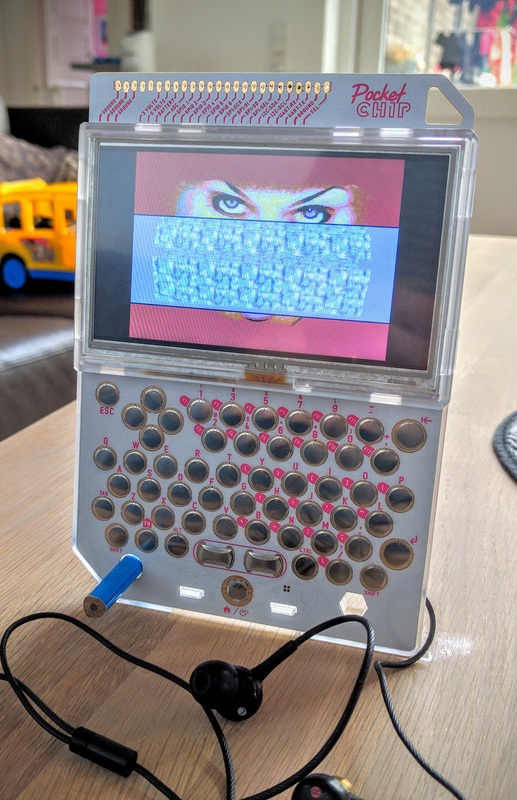ASMotor releases
I'm happy to announce that I now (finally) have an automated build system in place for ASMotor.
I'm happy to announce that I now (finally) have an automated build system in place for ASMotor.
I happen to own an OSSC (Open Source Scan Converter) and wanted to use it to connect my ZX Spectrum Next to my flat panel. The ZX Spectrum Next does have an HDMI output, but it produces a rolling, waving, wobbly picture. So I connected up its VGA output to the OSSC and started tweaking ...
Some time ago I purchased a DivIDE 2k14 interface for my ZX Spectrum +2. This particular incarnation of the popular DivIDE and DivMMC interfaces seemed like a good choice with its Kempston compatible interface (for those games that don't work with the Sinclair interface built into the machine), and of course four flashable firmware slots, so I could easily switch between Fatware and ESXDOS.
The interface is actually advertised as being flashable, which I guess most people would assume means they can update the flash from software.
As it turned out, this was not possible.
For quite a while I had been wanting a member of the TED series. These are the computers from Commodore that employ the TED chip as their heart - the C16, the Plus/4 and their lesser known siblings, the C116, C264 and even C364.
What I really wanted was a Plus/4 because it just looks so good. A real cursor pad and better ergonomics than the C16. But an auction turned up and I got my hands on a untested C16 for an excellent price - it turned out to be fully functional (except a few broken traces on the keyboard matrix), and I upgraded it to 64 KiB and so on. What you'd usually do.
The TED computers share some common functions and are generally compatible with each other. After upgrading my C16 I had been wondering whether it would be possible to add internal function ROMs to the it. Its sibling, the Commodore Plus/4, ships with internal functions ROMs that provide the productivity software suite, but other, more interesting, options are also available. One thing they share is allowing for external function ROMs, on the Plus/4 you can have 32 KiB of internal ROMs (divided into 16 KiB "high" and "low") and the same externally in the cartridge port. The Commodore 16 only allows the external ROMs out of the box.
I wanted to find out if it would be possible to add something internally to the Commodore 16 as well.

The PocketCHIP runs Debian Linux, so getting VICE installed couldn't really be easier.
You will need to be in the console app for the rest of this guide. You will also need to be connected to a working WiFi accesspoint.
First off we need to update the database of available packages. Remember that the default password is "chip", you will need this for sudo.
After I had upgraded the Commodore 128 with JiffyDOS and made some tweaks, it was time to turn my attention to the Commodore 64c (the new slim version). This one desperately needed JiffyDOS as well, but I also had other, more sinister plans for it.

The Danish C64 came with some stickers on the keys, had a different character generator ROM and also a different kernal that was modified to support the new keyboard layout.
So I had two ideas for this C64c - I wanted JiffyDOS, but I also wanted Danish characters. And it should ideally be possible to swap either of them out using two toggle switches.

Yeah, I'm not really sure why I used two pull-up resistors - the switch controls an address line on both ICs at the same time, so that's kind of wasteful. Anyway, it worked fine.
This Commodore 128 is an older model, the kernal and BASIC ROMs are the first revisions and not the later, bug-fixed versions. But you don't install the old versions when you replace the ICs, do you? That would make no sense. By upgrading the kernals I now had a Franken128 with new kernals and old BASICs. That's easy to fix, just replace the two BASIC ROMs with two new EPROMs, right? Right.
But it turns out there's a better way. The Commodore 128DCR (128D, cost reduced) only uses two ROMs, not four. The old 128 also supports this mode via jumpers - almost. There's a slight hardware bug, but that's easy to work around.
Two EPROMs instead of four? Sounds like something I want to explore.
It's possible to load tape games into a Commodore 64 using a mobile phone or mp3 players. You can either convert the programs into audio files or you can use a dedicated player on a mobile phone.
I have used the Android program, TapDancer, which does a fair job. It's not the greatest UI and preparing a tape file for playback is pretty slow, but on the plus side, it does have built in C64 tape turbos.
Just a short note to let the world know that the successor to RGBDS, ASMotor, is open source and available at Github.